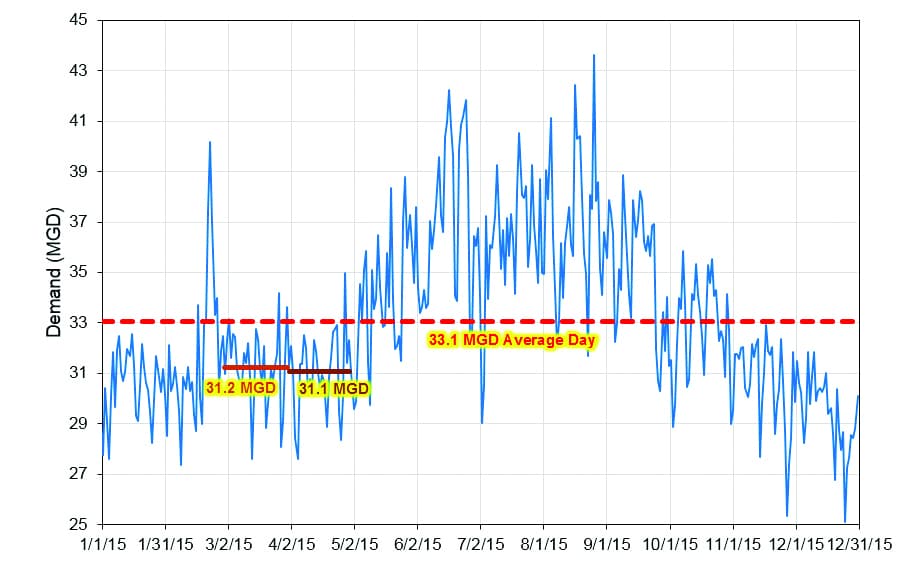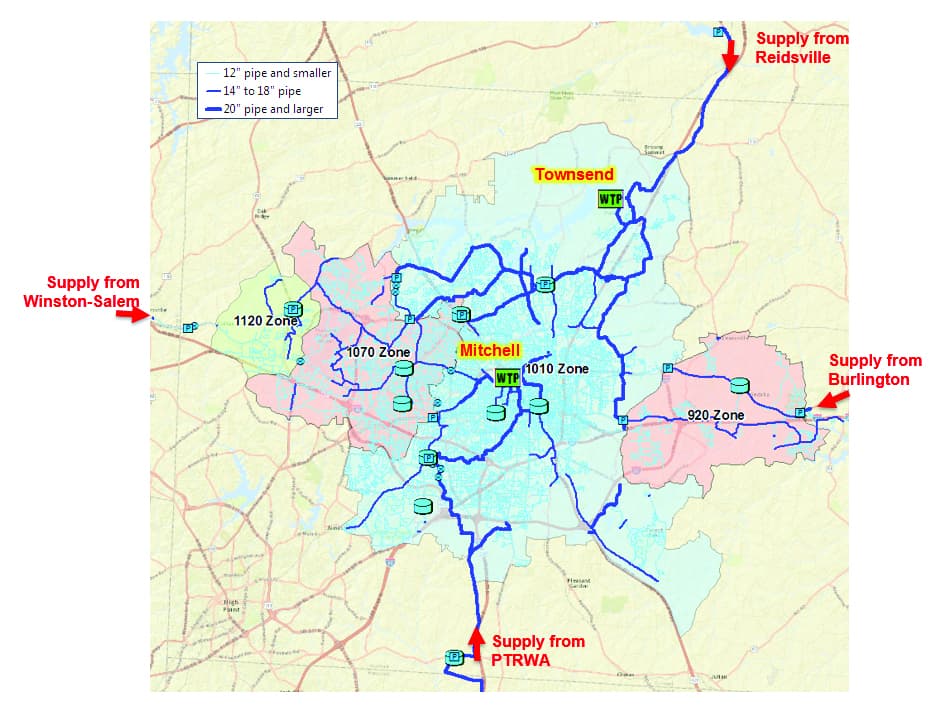Modeling to Support 30-Day Shutdown of Greensboro's Mitchell WTP
Last Modified Jul 01, 2022

Due to needed repairs, the Mitchell WTP, located in the heart of Greensboro’s water distribution system, would be shut down for more than 48 hours for the first time in 50 years.

The outage was scheduled for March/April, when demand is the lowest.

The project involved building a regional hydraulic model by combining 10 existing models of the partners’ distribution systems. The combined model had more than 100,000 pipes and average summer demand of nearly 120 mgd.
This presentation demonstrates the use of hydraulic modeling to plan operations during a month long outage of a water treatment plant located in the heart of the largest water system in North Carolina.
The presentation focuses on a Jordan Lake Partnership study of water system interconnections in North Carolina’s Triangle region. The study’s goals were to determine how much water could be moved through interconnected water systems to increase reliability for all customers, optimize supplies during times of water shortages, and expand water supply alternatives available to the region.
The partnership includes the Towns of Cary, Apex, Hillsborough, Holly Springs, Morrisville and Pittsboro; the Cities of Raleigh, Durham and Sanford; the Orange Water and Sewer Authority (OWASA) serving Chapel Hill and Carrboro; as well as Chatham, Orange and Wake Counties.
The project involved building a regional hydraulic model by combining 10 existing models of the partners’ distribution systems. The combined model had more than 100,000 pipes and average summer demand of nearly 120 mgd.
The model determined sustainable flows for long-term conditions, such as a drought that might impact some partners more than others. Modeling scenarios studied finished water transfers from utilities with surplus supply to utilities with shortages. Some transfers involved moving water through several distribution systems via multiple interconnections.
The presentation describes using extended period simulations of large flows through interconnections to determine pressures and evaluate pump and tank performance.
Regional hydraulic models provide water utilities with a valuable tool for exploring existing or potential interconnections and possibly deferring the need for water supply expansions.











